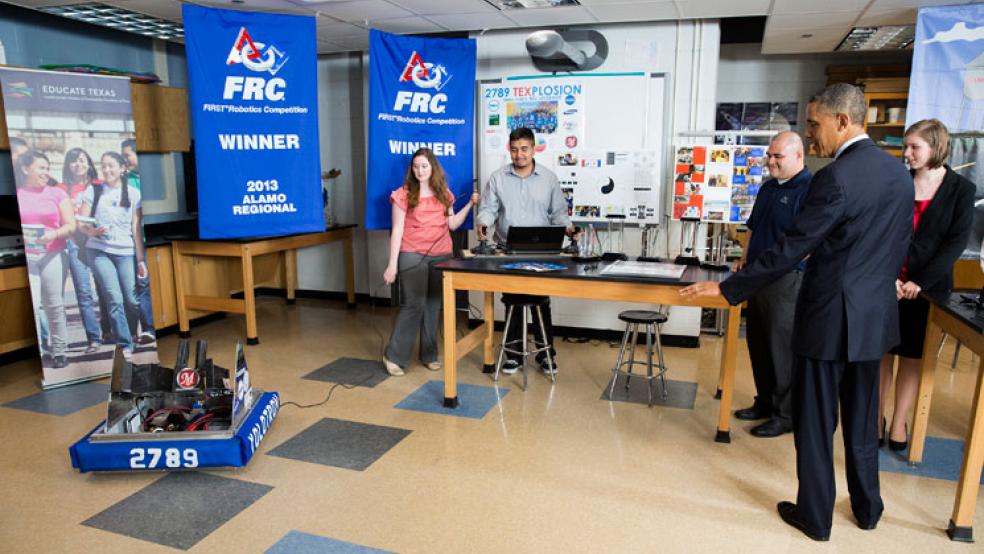In classrooms around the world, the blackboard has already has its day and been replaced by the whiteboard. But this piece of teaching equipment may soon be on its way out as well – along with paper, pencils and textbooks.
At the Lih Jen International Private Elementary and Middle School in Taipei, staff believe they have seen the future of education, and there's not a stick of chalk in sight. Working in conjunction with tech and computer giant HP, the school's classrooms are designed to be a flexible and interactive learning space, with a giant high-resolution touch-sensitive display wall as its centerpiece.
Related: More Proof High School Grads Aren't Ready for College
"The classroom of the future is a place where kids get to interact with technology on a daily basis," Michael Smith, a teacher, told CNBC's Innovation Cities. "They learn through technology," he added.
Each student in Smith's class has their own touch screen computer, which allows them to interact with their teacher. Audio, video and text are combined to create a learning experience that stimulates students and gets them interested in learning.
So when giving a geography lesson, for example, a teacher can stand in front of their class and use a huge interactive touchscreen to scan Google Earth and highlight features such as mountains, canyons and savannahs in vivid detail. A teacher can also monitor the online content their students are accessing from their desk, creating a safe learning environment.
The 'classroom of the future' is not cheap, however. HP's VantagePoint, the 132 inch, touch sensitive centerpiece of the class, has a suggested retail price of $125,000, while the HP TouchSmart PCs used in the class retail for over $500 each.
Related: Wearable Tech: Why You'll Soon Know Way Too Much About Your Friends' Bodies
However, the classroom of the future has raised concerns that this is a case of tech for tech's sake, using expensive equipment when a pencil and paper would do just as well, and for considerably less. Smith disagrees, pointing to the enthusiasm his students are displaying for this kind of learning. "They love it, they love it a lot more than a regular classroom environment," he said.
In 2012, a poll of U.K. teachers conducted by the Times Educational Supplement website found that 55 per cent of respondents regularly worked over 56 hours per week, with 78 per cent stating that they regularly worked on Sundays too.
Smith, however, is finding his workload lighter and more efficient. "It's a lot easier to get through the content," he said. "Getting files and grading work takes a lot less time than it would if it were paper-based. If I find out that there's anything in particular that the kids are not understanding, I can focus on the parts that need to be focused on."
While this kind of technology seems to be revolutionizing the way students in Taipei are learning, could it realistically be rolled out across the world? Educational budgets across the developed world are coming under increasing strain, while in sub Saharan Africa over 56 million people aged 15 to 24 have not even finished primary school, according to UNESCO.
"We really wanted to focus first on introducing touch as a new sensorial experience that modifies their learning paradigm," Luca di Fiore, Senior R&D Manager at HP, told CNBC. "In three to four years, the price point will be a third of what it initially was, and at that point it will be a lot more feasible to consider this on a larger scale."
This article originally appeared in CNBC.
Read more at CNBC:
The world's best cities for young people
Real-life Robocop? Machines rise to the challenge
Want to win cash for taking your meds? Here's how…

